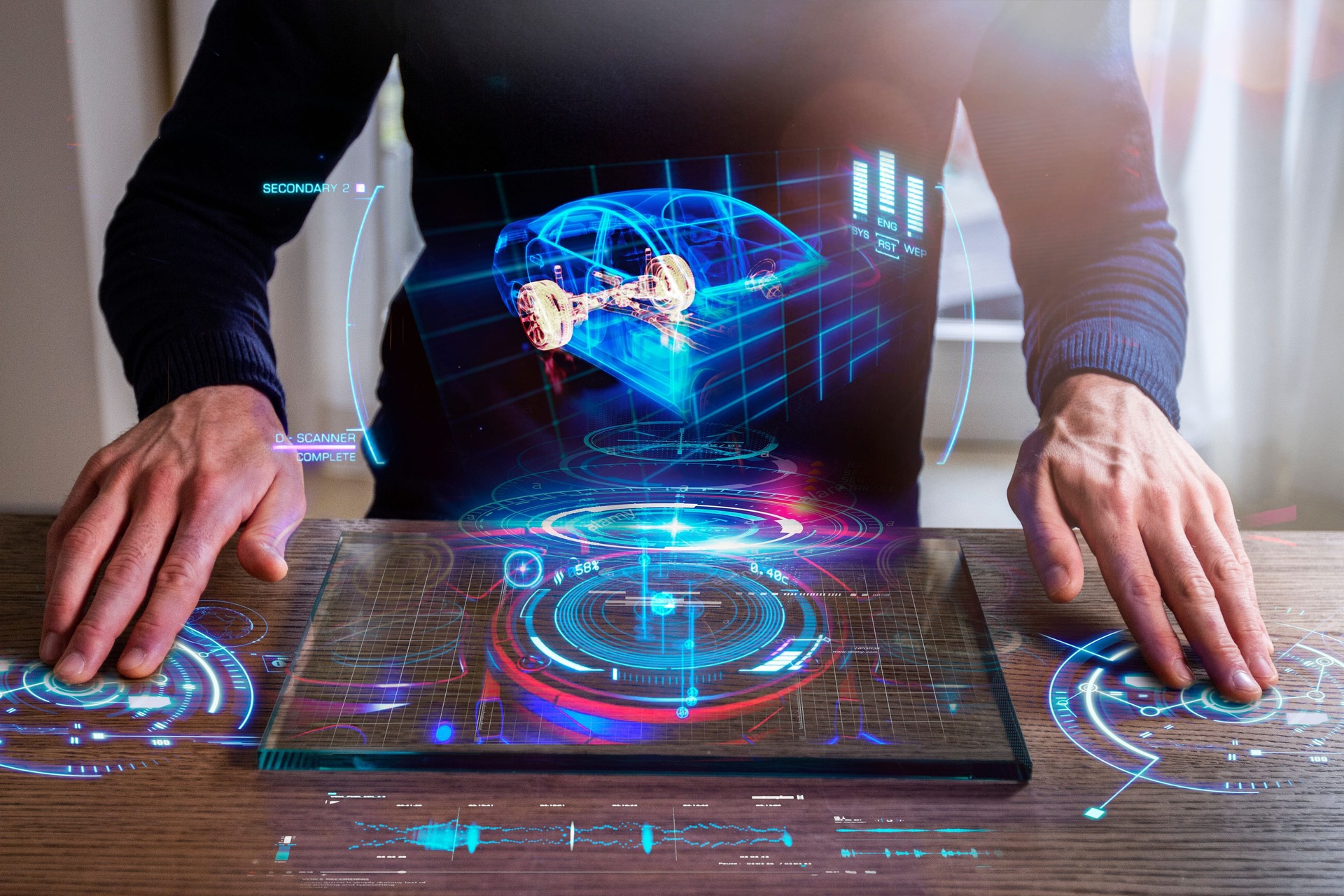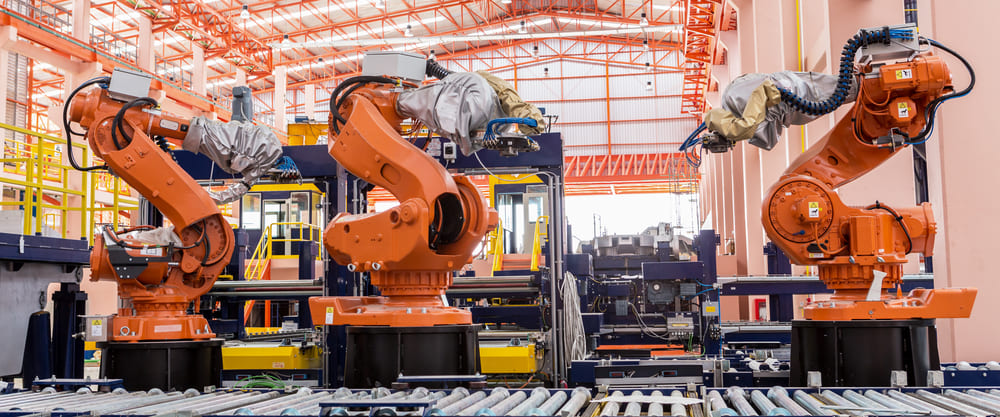Highlights from NVIDIA’s GTC 2021 Keynote
Category: AI Insights
Published date: 20.04.2021
Read time: 9 min
Recently NVIDIA held its GTC 2021 event where it outlined some of the latest technologies that are helping to reshape industry and society. NVIDIA’s CEO, Jensen Huang, delivered the keynote address where he announced the launch of new and updated products that further expand the AI ecosystem and meet the needs of more demanding workloads. This includes things like new methods of training autonomous vehicles and optimizing assembly lines through 3D simulations. There was a lot of news to unpack from this year’s online event, so let’s get right into it.
The Debut of the Drive Atlan System
At GTC 2021, NVIDIA unveiled Drive Atlan, an AI-enabled system-on-a-chip for autonomous vehicles that will target automakers’ 2025 models. It includes NVIDIA’s next-gen GPU architecture that is capable of delivering just over 1,000 trillion operations per second. This is a significant upgrade from their previous generation chips, Drive Xavier and Drive Orin, each of which could reach 30 and 254 trillion operations per second respectively. This should give the development of autonomous vehicles a tremendous boost since they need to calculate all of the possible situations they will encounter on the road and make the right decisions.
The way it works is the raw training data is prepared by human data annotators who annotate the images and videos with all of the needed information the AI system needs to learn. This ranges from simple labeling of things like other cars, street signs, road marking, and other things the vehicle might encounter on the road to more advanced forms of annotation like semantic segmentation and 3D Point Cloud Annotation. All of this is very tedious and time-consuming work, which is why a lot of companies choose to outsource this work to a service provider, like Mindy Support.

Accelerating the Development of Robotics
AI-powered robots are already changing the way we live and work. Thanks to AI, they are able to perceive and interact with their environments in new ways that were not possible until now. At this year’s conference, NVIDIA announced new developments to its Isaac Sim, an Omniverse robotics app. It allows for life-like simulations for simulating the actions and movements of robots which includes the latest PhysX for fast, stable GPU enabled physics simulation as well as MDL material definition support for physically based rendering. It also provides extensible functionality and user-customized UI, python scripting for scene management, and supports workstation, headless, and cloud deployment options.
All of this produces valuable training data for the AI system. Engineers would take this simulation and feed it into the machine learning system so the robot can identify everything it needs to. Again, all of the data would need to be annotated so the system can learn to recognize all of the objects in the simulation. NVIDIA sim is already being used to create all kinds of robots in healthcare, agriculture, manufacturing, and other industries and these new advances are sure to decrease the development time for new products and increase the adoption of new products.

Super Computing
At this year’s conference, NVIDIA unveiled Grace, the company’s first data center CPU, which is expected to deliver 10x the performance of today’s fastest servers on the most complex AI and high-performance computing workloads. It is designed to address the needs of the world’s most complex applications including ones that use natural language processing, provide the user with recommendations, and AI supercomputing. NVIDIA Grace is able to analyze enormous amounts of data that need a lot of computing power and massive amounts of memory. Such supercomputers did not exist on the market until NVIDIA announced this new supercomputer. It combines energy-efficient Arm CPU cores with an innovative low-power memory subsystem to deliver high performance with great efficiency.
NVIDIA is launching this new supercomputer at a time when the volume of data is growing and new AI models are requiring more data and processing power. The biggest AI parameters today include billions of parameters and are doubling every two-and-a-half months, according to information from NVIDIA. Training such models requires extraordinary amounts of CPU that can be tightly coupled with GPU to eliminate bottlenecks. Even though this new supercomputer was just announced, we are already seeing organizations like The Swiss National Supercomputing Centre (CSCS) and the U.S. Department of Energy’s Los Alamos National Laboratory already planning to build Grace-powered supercomputers in support of national scientific research efforts. Grace will also allow NVIDIA to compete for a share of the CPU market with more established market players like Intel.
The Introduction of Jarvis Conversational AI
At the GTC conference, NVIDIA announced that the new Jarvis framework is available for developers with state-of-the-art pre-trained deep learning models and software tools to create interactive conversational AI services that are easily adaptable for every industry and domain. It has the ability to generate billions of hours of phone calls, web meetings, and streaming broadcast video content on a daily basis. In addition to this, Jarvis models offer highly accurate automatic speech recognition, as well as superhuman language understanding, real-time translations for multiple languages, and new text-to-speech capabilities to create expressive conversational AI agents.
While all of this is very impressive, Jarvis uses GPU acceleration that allows it to listen, understand and generate a response in a fraction of a second. It can be deployed in the cloud, a data center, or at the edge while scaling it to accommodate millions of users. This will pave the way for new generations of AI apps that were previously thought to be impossible to create improving interactions with humans and machines. There are many possible applications of this new technology, besides conversational chatbots like Alexa and Siri. For example, it can be used in the healthcare sector to create digital nurses to help monitor patients around the clock, relieving overloaded medical staff. Since a lot of business is done via Zoom and the meeting participants could be connecting from different parts of the world, Jarvis could be used for real-time translations.
It is also worth pointing out how Jarvis was trained. NVIDIA used several million GPU hours on over 1 billion pages of text, 60,000 hours of speech data, and in different languages, accents, environments, and lingos to achieve world-class accuracy. This just goes to show how much data is needed to create a world-class system like this. It is worth noting that all of this text and speech data would need to be annotated with classification and categorization, tagging and other data annotation methods. Mindy Support provides such text annotation for conversational AI in addition to image annotation.

New Developments in 5G
In this year’s GTC conference NVIDIA also announced the release of Aerial A100 AI-on-5G products. This will give AI applications the ability to run over 5G networks which provides a lot of benefits such as enhanced uplink and downlink speeds, coverage, mobility support, configuration quality of service, and quality of experience among other things. This would also enhance the gaming experience on mobile devices, which is something that NVIDIA is also known for. These new developments would also make AI-powered apps run faster and smoother so they can be used anywhere.
Mindy Support Can Help You Create Next-Gen AI Systems
There were a lot of new and interesting developments in AI that were announced at this year’s GTC conference. However, creating new, cutting-edge AI products requires significant amounts of data annotation. Mindy Support can provide you with all of the data annotation services you need for your project. We are one of the largest BPO providers in Eastern Europe with more than 2,000 employees in six locations all over Ukraine. Our size and location allow us to source and recruit the needed number of candidates quickly and we will be able to scale your team quickly without sacrificing the quality of the data annotation. Contact us today to learn more about how we can help you.




